Deciphering and reinventing ancient recipes is an inexact skill. To some degree, it is more like alchemy than anything else. There is a touch of science in the linguistic, historical or archaeological research; a touch of art in the choosing of ingredients and their relative quantities; and a touch of faith or intuition in what feels right from a culinary point of view. The mark of the cook, chef or the interpreter and the decisions they made along the way is always present in the final dish.
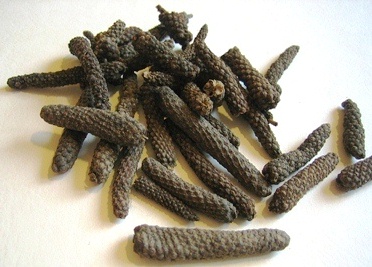
Another uncertainty is the surety of the cook with ingredients and their equivalency with modern ingredients. For example, in most Roman texts, the word “pepper” is used in a generic sense. It could mean black pepper, white pepper or long pepper (Piper longus). Long pepper was the most expensive and the most sharply flavored, white pepper was gentle in flavor an intermediate in price and black pepper was the people’s pepper: relatively cheap and strongly, but crudely flavored. The choice of the type of pepper depended upon the flavor desired for the dish, and the size of the diner’s purse. Today, most cooks unfortunately interpret this ingredient to be black pepper and thus limit the variation potentially associated with the dish.
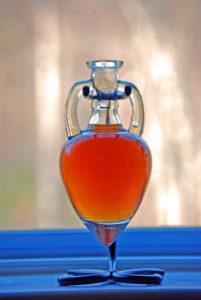
In ancient Roman recipes, oenogarum is used in two different culinary circumstances: 1.) In the kitchen to flavor foods and construct sauces, and 2.) As a condiment or dipping sauce at the table. As an ingredient to sauces, oenogarum is mixed with many herbs and spices from lovage and pennyroyal to long pepper and crushed cloves depending upon the food item to be enhanced. At the table, the ingredients tended to be more limited and sometime included a dash of vinegar, honey or a sweet and thick fruit or wine syrup.
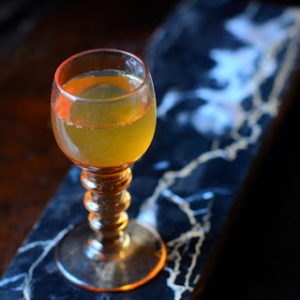 Many problems surround the reconstruction of these sauces, but the biggest issue is we really have no idea what Roman wine was like. Was it strong? Was it sweeter or more sour than wines of today, and what quality was used in the kitchen for the construction of sauces? From Pliny the Elder (NH 14.8) we know that a cup of Falernian wine would catch fire from a candle flame drawn too close. From this we can assume that at least this variety was much stronger than our wines today. We also know that some sweet wines were thoroughly enjoyed, especially some sweet white wines.
Many problems surround the reconstruction of these sauces, but the biggest issue is we really have no idea what Roman wine was like. Was it strong? Was it sweeter or more sour than wines of today, and what quality was used in the kitchen for the construction of sauces? From Pliny the Elder (NH 14.8) we know that a cup of Falernian wine would catch fire from a candle flame drawn too close. From this we can assume that at least this variety was much stronger than our wines today. We also know that some sweet wines were thoroughly enjoyed, especially some sweet white wines.
The ability to age was a desirable trait in Roman wines, with mature examples from older vintages fetching higher prices than that from the current vintage, regardless of its overall quality. Roman law codified the distinction between “old” and “new” as whether wine had aged for at least a year. Falernian was particularly valued for its aging ability, said to need at least 10 years to mature but being at its best between 15 and 20 years. The white wine from Surrentine was said to need at least 25 years.
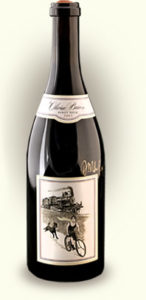
The finest wine was reserved for the upper classes of Rome. Below that was posca, a mixture of water and sour wine that had not yet turned into vinegar. Posca’s use as soldiers’ rations was codified in the Corpus Juris Civilis and amounted to around a liter per day. Still lower in quality was lora, which was made by soaking the pomace of grape skins already pressed twice in water for a day, and then pressing a third time. Cato and Varro recommended lora for their slaves. Both posca and lora were the most commonly available wine for the general Roman populace and probably would have been for the most part red wines.
With all this uncertainty about garum and liquamen and an additional amount of uncertainty about Roman wine, one approach is to start anew in the recreation of oenogarum. This is exactly what I’ve done with a little help from vintner, David Mahaffey, the genius behind Heron Valley Vineyard’s Olivia Brion wines.
Working with my garum and his own Olivia Brion 2009 Syrah, David came up with a formula pleasing to his modern expert palate. He chose the silky and concentrated Syrah because he was cooking a wild boar shot on the vineyard grounds and thought that the red would work better with that meat. He writes, “After a little experimentation, I decided that the right proportional volume of Syrah to garum was 225ml wine to 50ml garum–that seemed to have the right fruit to savory balance.” I find David’s choice interesting because many historical cooks use a 1:1 ratio, that for me, at least, is much too heavy on the garum. David’s ratio of about 4.5:1 (wine:garum) works extremely well from a culinary point of view as a sauce to prep dishes with in the kitchen.
I also find David’s choice of his Syrah interesting from a historical point of view as well. Pliny the Elder wrote about the wines of Vienne (which today would be called Côte-Rôtie), where the Allobroges made famous and prized wine from a dark-skinned grape variety that was at that time new to the Roman world (NH 14.3). It has been speculated that it could be today’s Syrah, although some have argued that the description of the wine would also fit Dureza grapes. So good on you David!
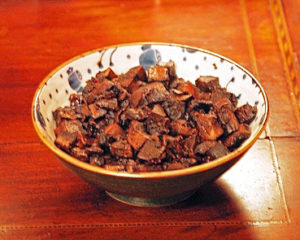
A Roman Mushroom Dish
(based on Apicius (7.8.15))
Ingredients
1 pound Portobello Mushroom caps
1.5 cups good Shiraz (or Syrah)
1/3 cup garum or liquamen
4-5 long pepper catkins, crushed or ground
Directions
Clean thoroughly and slice the mushrooms into bite-sized morsels and set aside. Mix wine and garum and mix well but gently.
In a large sauté pan, warm the oenogarum and long pepper over medium-low flame until it is hot. Do not let it come to a boil. When hot, add the mushrooms. Cook uncovered until mushrooms have given off their own water and have become tender. Remove from flame and drain the mushrooms. If desired, catch the liquid from the pan and use it to flavor another dish for the same meal. Works very nicely with grain dishes such as barley. Enjoy!
(Words by Laura Kelley. Photo of Homemade Garum and Mushrooms with Oenogarum and Long Pepper by Laura Kelley. Photo of Long Pepper from Wikimedia Commons; Photo of Roman Wine by Deana Sidney and Photo of Olivia Brion Pinot Noir borrowed from the Olivia Brion website. Special thanks to David Mahaffey for beginning to help solve the ancient puzzle that is oenogarum.)

1 thought on “A New Oenogarum”